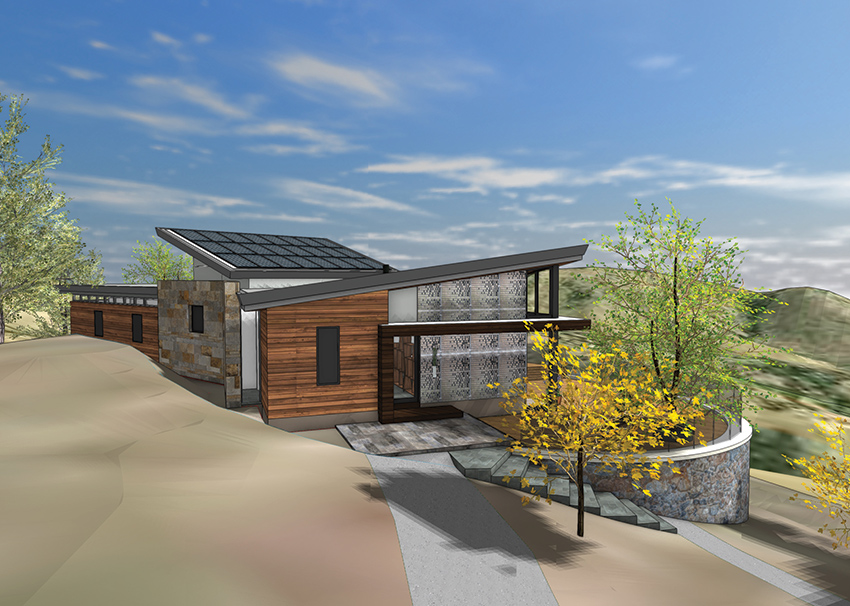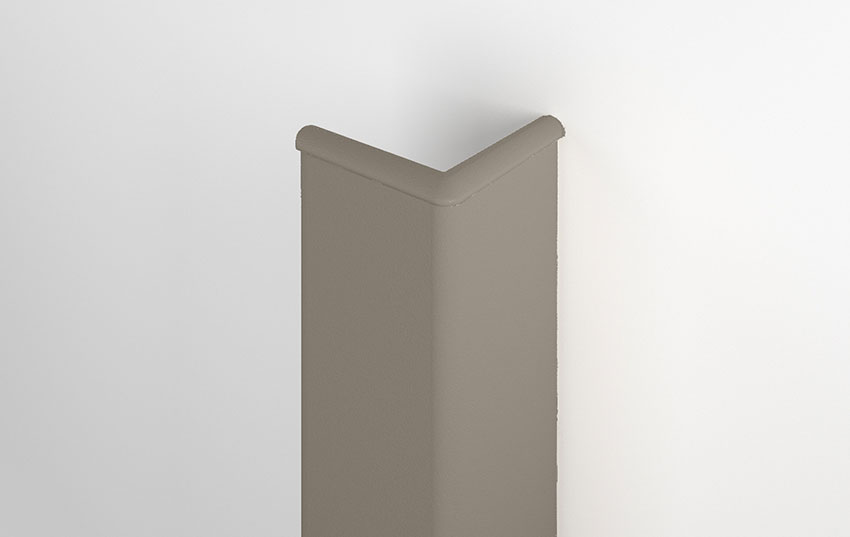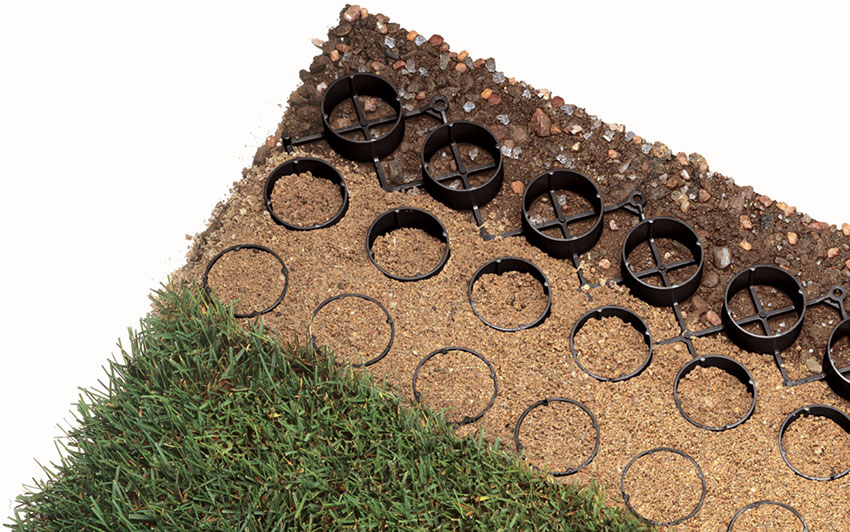Adventures at the New Frontier
FULL CIRCLE: SUSTAINABILITY AT THE END
The overall condition of a facility speaks volumes not only to those who live and work there, but also to visitors and potential users. The old adage still rings true: You only get one chance to make a good first impression.
To maximize a sustainable life cycle, everyone responsible for the longevity of a new building– architects, interior designers, contractors, building owners, and facility staff–should take a long-term view when it comes to choice of products. That means focusing not only on the performance of selected products, but also addressing the final destination for those products when they reach their end of service. Instead of simply sending scrap to a landfill, leading manufacturers are able to reuse old material in ways that create usable products with greater performance.
Industry manufacturing leaders have a goal to be Zero Waste by 2025. This goal includes the ability to repurpose any internal scrap. Company and product transparency can be gauged by examining manufacturers through documentation such as a Health Product Declarations (HPD), Environmental Product Declarations (EPD), and Greenguard Gold Certificates. Gathering the information to deliver these documents also sheds a light on the environmental aspects of products at various stages. This information helps hone sustainable decision making and future planning.
Those businesses implementing a more robust recycling program allow manufacturers to increase product yields and produce less scrap. Often, manufacturers recognize recycling gains from an overall diversion rate based on production efficiencies, and internal recycling of PVC, metals, and comingled materials. Increasingly, manufacturers are launching recycling initiatives on the consumer side to accelerate progress toward waste reduction goals. Many states offer incentives for local manufacturers to recycle. The Green Tier program is a recognition and partnership program between Wisconsin businesses, trade associations, communities and non-profits, and the Department of Natural Resources (DNR). Green Tier was the first program of its kind in the country and serves as a model for others. It is based on recommendations from an advisory committee representing a wide array of business sectors, industry councils, municipalities, and environmental organizations. It also builds on the successes of the Environmental Cooperation Pilot Program, which the DNR launched in 1998 to offer participating companies the opportunity to pursue environmental initiatives that would not have been possible under traditional regulations. Green Tier is designed to encourage innovation, collaboration, and new environmental goal setting.
Green Tier 2, the newest phase of the Wisconsin program, is targeted at companies with an effective Environmental Management System (EMS) and a history of superior environmental performance. Tier 2 participants represent truly exceptional companies that are not only committed to going above and beyond but are also committed to bringing about change in their industry, region, or within their supply chain.
“While the overall reductions are fantastic, for us the most exciting part of these results were the modifications to our production processes that eliminated waste,” said Mark Alan, Inpro’s Senior Vice President of Product Management and Development. “In other words, there was no scrap to divert because it was never created in the first place. These process improvements amounted to 42.3 tons that never entered the waste stream.”
By taking ownership of a product’s pathway, from design all the way to the potential for reuse at disposal, sustainability allows for the all-important recapture of goods and materials.
LEVERAGING SOFTWARE & TECHNOLOGY TO ACHIEVE SUSTAINABILITY GOALS
Cutting-edge advances in software allow architects and design professionals to futurecast and fine tune designs at their earliest stages. Flexible, design-centric BIM solutions enable designers, whether in individual practice or at a large firm, to express their creativity and allows for the expansion of innovative architectural forms, construction methods, and use of materials.
Addressing Embodied Carbon
A unique focus of the embodied carbon calculator tool places a lens on the implications of a project’s embodied carbon. Embodied carbon refers to the carbon emitted through the manufacturing and transport of a building's materials as well as the building's assembly. Embodied carbon is responsible for about 11% of global CO2 emissions, and that number is expected to rise.
Embodied carbon is different from operational carbon, which is generated from in-use operations like heating, cooling, lighting, and ventilation. While operational carbon can be reduced after a building is constructed, embodied carbon is locked into the structure as it is built. It is “embodied” in the building itself.
Because embodied carbon is a fixed number that is based upon materials used, monitoring of that factor is crucial.
For architects, targeting net-zero carbon means that analyzing projects’ environmental footprints is more important
now than ever. To account for and offset embodied carbon within a design, BIM software applications create a way to
calculate embodied carbon throughout the entire life cycle of a project. These programs feature an embodied carbon
calculator. The tool has a pre-formatted worksheet that has built-in formulas to calculate material embodied carbon
emissions based on designer inputs.
- Product Stage: for tracking embodied carbon emitted from supply, transport, and manufacturing of selected raw materials.
- Transportation Stage: for tracking carbon emitted from the transportation of products from the manufacturing plant to the project site.
- Construction Stage: for tracking carbon emitted from any on- or offsite construction-related activities.
- Replacement Stage: for tracking carbon emissions associated with anticipated replacement of building components.
- Deconstruction & Demolition Stage: for tracking carbon emissions arising from any on- or offsite deconstruction and demolition activities.
- Recovery/Recycling Stage: for tracking carbon emissions associated with treatment and processing of materials and components that’re intended to be recovered and reused after the end of the built asset’s life cycle.
- Disposal Stage: for tracking carbon emissions arising from disposal of materials and components not expected to be recovered and repurposed, but rather to be incinerated or disposed of at a landfill.
Algorithms-aided design tools enable designers to extract data from the embodied carbon calculator and visualize it as a chart. When coupled with tools used to calculate energy demand, design professionals are set up to complete a holistic carbon emissions assessment.
Colin Davis of Studio Partington in London, an early adopter of embodied carbon tools, said: “Studio Partington is passionate about designing buildings that take a conscious effort to minimize their impacts on the environment. The awareness of embodied carbon and the contribution it makes to a building’s overall carbon footprint is a new field to all designers. The embodied carbon calculator gives us the opportunity, from the earliest stages of a project, to quickly understand and analyze the amount of material and likely embodied carbon impacts of our proposals. This can feed back into the design process to lead to better and more responsible solutions.”
From the Software to the Strategies: Reducing Embodied Carbon in Projects
Embodied carbon calculators demonstrate the effectiveness of certain strategies to reduce a project’s embodied carbon levels.
First among embodied carbon reduction approaches is the re-use of buildings instead of constructing new ones. Construction processes have a high carbon footprint. Renovating what is already there, instead of tearing everything down and starting over, can greatly reduce a project’s embodied carbon levels. A renovation project still allows for design creativity at virtually the same level as with a ground-up build.
Second, it is important to limit use of high-carbon materials like plastic, concrete, and metal. Wood is growing more and more popular as a building material due to its lower embodied carbon levels. Use of recycled materials is crucial. Especially for high-carbon materials like aluminum, recycling can greatly reduce a project’s embodied carbon, because the carbon required to manufacture those materials has already been accounted for.
To avoid accruing unnecessary carbon, source materials locally. Instead of having materials shipped from overseas, for example, look to source product from the immediate area. This reduces carbon emissions from lengthy transportation.
Modular systems also can reduce embodied carbon numbers. Modular structures are easier and faster to construct, reducing carbon emissions generated from the construction process.

Photo courtesy of Kipnis Architecture + Planning
Flexible design-centric BIM solutions enable designers to fine-tune designs at their earliest stages.
Notice

www.inpro.com

www.invisiblestructures.com

www.vectorworks.net









